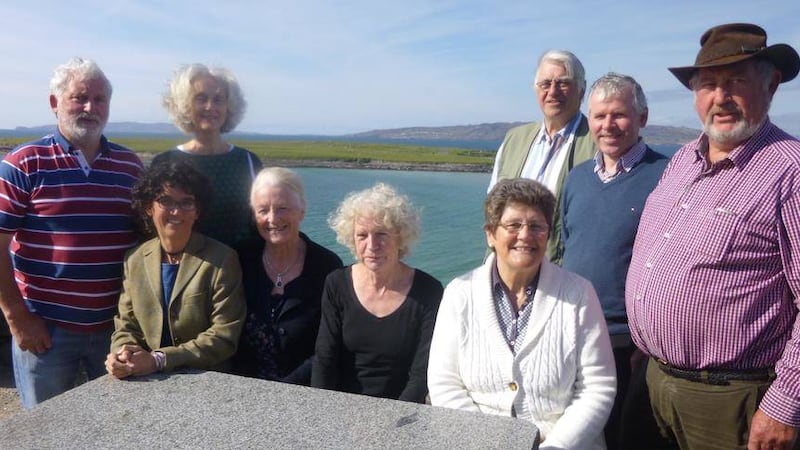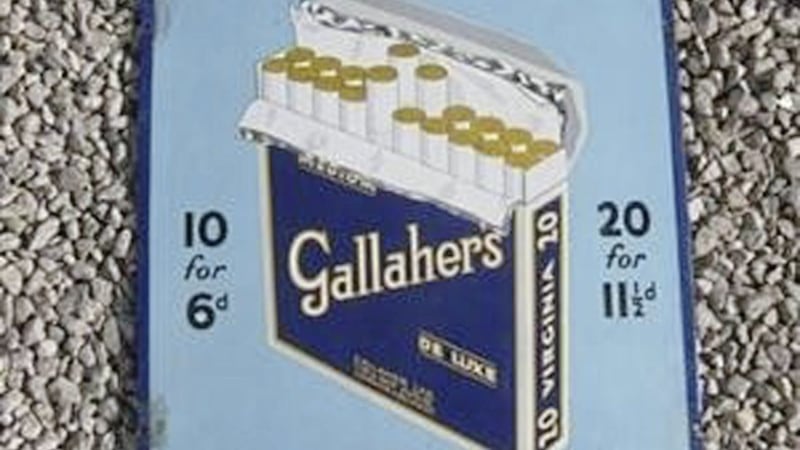EXCITEMENT is reaching fever pitch in Narin, Portnoo and Rosbeg an area much loved by visitors from Northern Ireland. Later this week, along with locals and people from all over Ireland, they will take part in the official celebrations heralding the arrival of St Conall’s Bell and Shrine, returning for the first time in 1,500 years to their original home on the Island of Inniskeel.
This homecoming is the culmination of years of communications and it’s thanks to the perseverance of one man, the late Malachy Mahon, that it’s actually going to happen. It had been talked about for ages but two years ago Malachy spoke at length to the curator of the British Museum and persuaded him to allow the pilgrimage to Donegal.
Malachy, retired headmaster of St Mary’s Collage in Irvinestown, was a man steeped in history who documented his research and loved this coast line of Co Donegal. He read and re-read In Conall's Footsteps by historian Lochlann McGill. His wife Brenda told me he even read it to his grandchildren; how he would have loved to accompany the author on his historic walk to Inniskeel Island discussing the archaeology and the the stories of the monastic site.
Next Saturday at 1pm people will be able to take this walk when the tide is low and the sandy causeway is exposed and there’s access across Narin Strand and on to the grassy island and the remains of the ancient buildings, a real walk back in history to the days when St Conall first brought Christianity and learning to south west Donegal and beyond.
One of the most tragic stories concerns Conall’s friend St Dallan who often visited the holy island to worship in the small church. He prayed that he and Conall would share the same grave and his wish came true in a very brutal way as, on his last visit to Inniskeel, pirates landed at the little harbour, broke into the monastery and looted its contents.
Having done that they proceeded to decapitate the old man and threw his head into the Atlantic Ocean. Conall escaped but returned to find his friend’s body lying where he’d been murdered. The date was around 594. The story goes that the distraught man prayed that he’d find the head and when he looked out to sea, there it was bobbing in the water. It was retrieved and reunited with the body and so Dallan’s remains were buried on the island close to the monastery walls. Not long afterwards Conall himself died and was laid in the same grave.
This is still a revered and hallowed island visited at low tide by pilgrims often to look for a cure at the holy well or leave a memento when asking for good health, which at one time was promised with a sip of water from the bell. Indeed when it was in the safe keeping of the O’Breslin clan, it was said that the elder O’Breslin would attend pilgrimages with the bell hung round his heck on a chain. Apparently he would say to each pilgrim ‘A penny for me and you can kiss the bell”!
The drama surrounding the Bell and Shrine continued. In 1835 Major Nesbitt of Woodhill, Ardara, bought the relic for £6. But when he died 10 years later it disappeared, stolen with other treasures and taken to England. Thankfully in 1889 it was purchased by Augustus Franks who realised its historical significance and presented it to the British Museum where it is now on public display.
Sadly Malachy Mahon died in March but he knew his wish would come true thanks to the work of his wife Brenda and the local committee who have put in place a week of celebration.
For the past month a special archaeological course has been held for those interested in the history of the area and the early Irish church. Follow-up walks and talks will be held next week both in The Dolmen Centre and Inniskeel Community Hall plus, on Sunday July 12, a family fun day in the Tavern Kilclooney. Later that night I wish I could be at the variety concert with music, dancing and visiting artists. What a hooley that will be!
But Monday July 13 is the day. The bell, originally iron with a bronze mount, today encased in an ornate gold, silver and crystal shrine. will arrive early from Letterkenny and go on show at 10 am in the Dolmen Centre with refreshments, a country market and at 6.30 that evening an ecumenical service in the parish church that looks out over the island.
It’s a remarkable event, even historic for those most closely involved. The committee has worked hard and achieved much and the note they have added at the bottom of the brochure giving details says it all: Thank you to Malachy Mahon whose vision and determination guided this project over a number of years. Malachy did not live to see the conclusion of his dream to return the Bell and Shrine to Portnoo. RIP.
:: Details from the Dolmen Centre 00353 7495 45010.








